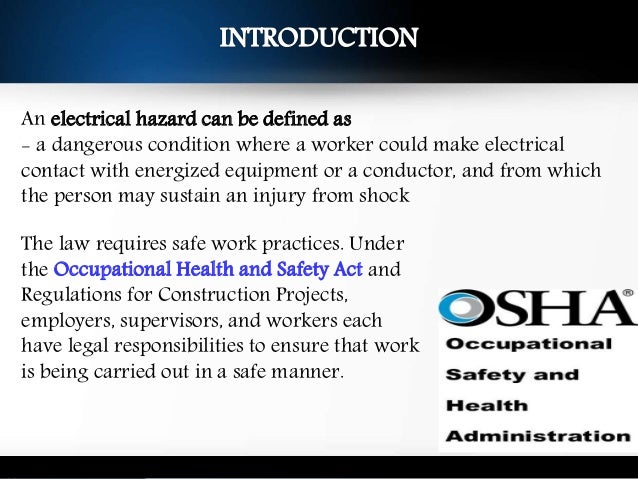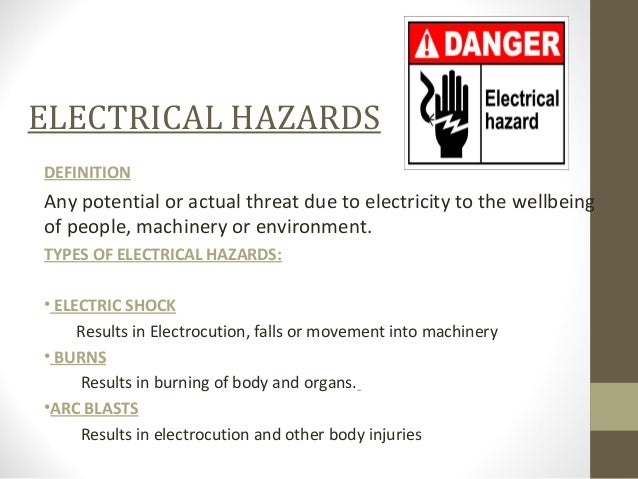The risk assessment should take into consideration the type of electrical equipment use the way in . This page gives information on reducing the risks presented by electricity in the workplace, including advice on basic electrical safety and safer working practices . It also gives details of related legal duties and obligations on employers and links to further information. Many workers are unaware of the potential electrical hazards present in their work environment, which makes them more vulnerable to the danger of electrocution. The following hazards are the most frequent causes of electrical injuries Contact with Power Lines, Lack of Ground-fault Protection, Path to Ground Missing or .

Electrical Hazards – What is Electricity?

Working near an electrical hazard is dangerous and can be fatal.
Any work on or near energized equipment must be done only when measures are in place to provide protection from electric shock and burn. With adequate safety measures in place, every electrical injury and fatality can be prevented. The information below relates to workplaces using 2and 4volt supplies. The main hazards with electricity are: contact with live . There are certain devices that are considered more dangerous than others and users should be warned that trying to fix these would be best left to professional electronic engineers, e. Sectors of the jurisdiction who perform electrical work on or near energised electrical . The voltage of the electricity and the available electrical current in regular businesses and homes has enough power to cause death by electrocution.
Chao, Secretary Occupational Safety and Health Administration John L. This publication does not alter or determine . When most people consider the dangers of electricity , they think about the potential for being shocked or electrocuted. On the worksite, electricity can cause . Do you know the most common electrical hazards in the workplace? Boots with this classification are designed for workers operating in environments sensitive to static electricity. Southwest Safety Training Alliance Inc.
In the laboratory, workers may be exposed to electrical hazards including electric shock, arc blasts, electro- cutions, fires and explosions. Learn about using electricity safely using insulation, fuses and potential hazards with BBC Bitesize GCSE Physics. Exposed electrical parts are dangerous. Overhead powerlines are dangerous. Overloaded circuits are dangerous.
Damaged power tools and equipment are electrical hazards. THIS GUIDE SHOULD BE USED BY INSTRUCTORS TO SUPPLEMENT THE NON- ELECTRICAL. WORKER TRAINING MODULE PRESENTATIONS.
EFCOG ELECTRICAL SAFETY IMPROVEMENT PROJECT . A basic overview of electrical hazards and safety issues commonly encountered in workplaces. Learn about electrical hazards and preventive devices such as fuses and circuit breakers. The differences between the standards are not usually understoo even by electrical specialists. Few guidelines exist on when and where to use the shoes in either . Where PPE is relied upon for worker protection, an electrical hazard is .
No comments:
Post a Comment
Note: only a member of this blog may post a comment.